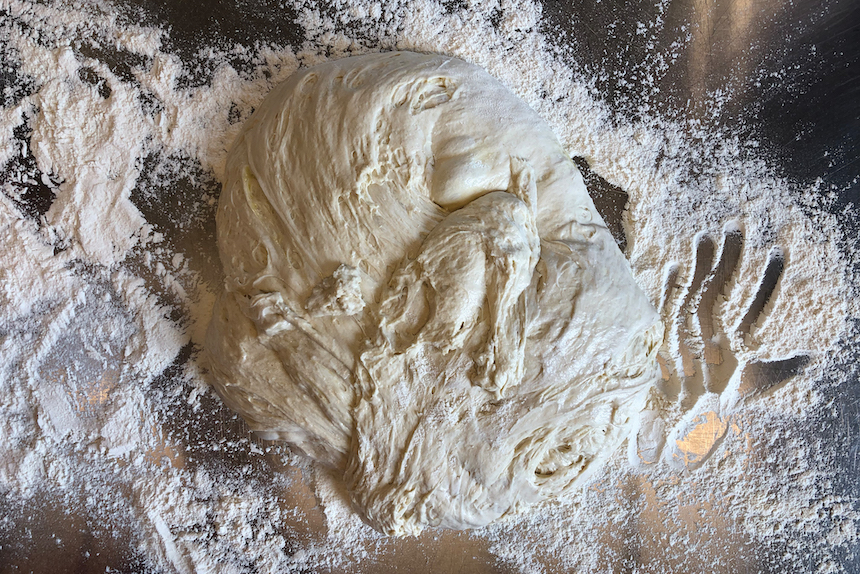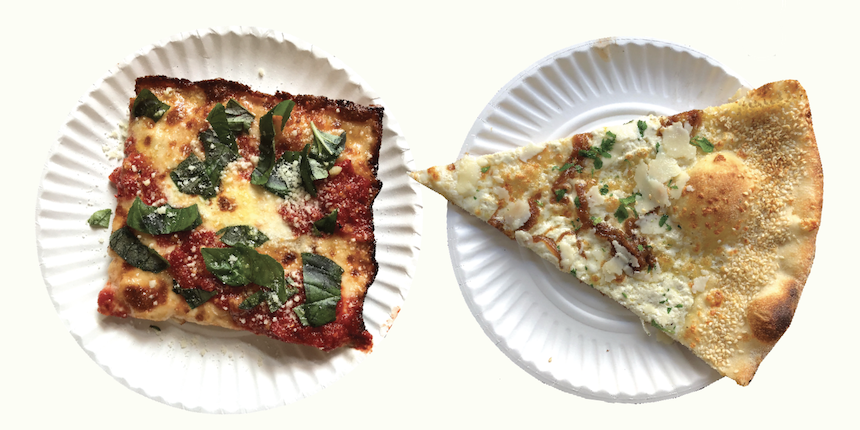Get a deep dive into which flour will work best for you
Let’s talk flour. Any smart pizza maker can make a great tasting pizza no matter what flour they have available, but there are a few factors that will determine the process based on the flour itself. There are flours on the market that are engineered for specific styles, but price point and availability are going to dictate whether they are usable. An imported flour that costs twice as much as a domestic is not always the smartest business decision, nor is every flour going to be available to you if you live in a remote area. Understanding a few key things first will help determine which flour is best for you.
One of the first questions you hear pizza makers ask each other is what the protein content of their flour is.
Protein content is unfortunately something that is not going to be written on a bag of flour, so it’s not easily known just by looking at it. Fortunately, spec sheets are now readily available online if you are looking to do some research on new flours or companies. Most flours are advertised as specific to certain styles. What the protein content does is tell you how strong the flour or gluten structure will be. For example, All-Trumps is a very common flour for New York-style pizza and is labeled as a high protein, high-gluten flour. Without even knowing the exact percentage of protein, this tells me that it is meant for longer maturations and lower cooking temps.
During fermentation, enzymes break down complex sugars into simple sugars. Yeast eats the simple sugars within the dough creating a byproduct of alcohol and carbon dioxide which, in turns, makes the dough rise and grow in size. The strength of the gluten and protein within the flour will determine how long this bubble will be able to hold the carbon dioxide within it before popping and flattening out. This flattening point is usually what pizza makers call “blown” dough. Skilled hands can work with blown dough, but it can be very tricky to work with and usually is a point of no return for some. There are a number of factors that will determine length of fermentation but if you are working with a high-gluten flour, one that has a high protein content, tells me that I can ferment my dough in the fridge for days and even up to a week if done properly.
In pizza the flours normally range between 12-percent and 16-percent protein.
Although the range may seem small, those small changes in percentage mean big differences to the type of pizza you will make. When I think about protein percentage in relation to style of pizza I want to make, there is a correlation. For a soft and chewy pizza like Neapolitan or anything cooked in a high-temperature oven, the lower the percentage of protein is better. For a New York-style pizza that is cooked in a lower temperature oven and is crunchier in texture and more durable to work with and handle, the higher the percentage of protein is better. When I am teaching new pizza makers, I always like to use the analogy of body builders. Body builders tend to eat large quantities of protein at mealtimes because they are looking to build a lot of muscle and increase their overall strength. Flours follow that same path. The more protein the stronger it is.
To give some perspective all-purpose flour is normally around 10-percent protein and bread flour is between 11 to 13 percent (cake flour and those meant for pastries is 10 percent down to 7 percent). The lower protein lends to a softer texture and not much gluten formation which makes sense for cakes and cookies.
No two high-protein, high-gluten fours are the same. For example, Millers has a recipe that they shoot for to ensure consistency, but wheat is a living thing that farmers do their best to control but ultimately is at the mercy of nature. Millers inspects and tests different grains during different seasons and change the blend, adding more of one and less of another to make up their final product. This is one reason why your flour might perform differently throughout the year. Other ingredients are also added to flour like ascorbic acid, potassium bromate and malt. Some of these ingredients are added to help enrich the flour like bran and germ where most of the vitamins are removed during the milling process.
Another aspect of flour to consider is the type of refinement.
For a long time, pizza makers loved to throw around the term “00” not really understanding what that means. There are five different grades of refinement for flour. The 00 is the lowest end of the spectrum meaning it is the most refined. During the milling process wheat is ground and then sifted several times. During this sifting process is when the bran and germ is removed leaving behind the refined flour. Most American flours are 00 in refinement but is not a requirement for labeling. Italian and other imported flours will have this printed right on the bag. This is also a piece of information that is readily accessible through spec sheets online. From 00 the list goes to 0, 1, 2, and then whole meal. The grade of refinement will tell you how much bran and how coarsely ground the flour is. Bread bakers talk about their flour in terms of ash content. The ash content is a way of categorizing the mineral content and bran content. The ash content is determined by burning a sample of flour and the leftover remnants are weighed determining the mineral content of the bran.
There is an endless list of flours on the market and the possibilities are limitless. Understanding protein content and refinement alone will help you determine which flours are best for your model. Once you have a handle on the basic elements, blending flours is a great way to change texture and increase complexity. Finding the perfect flour for your operation can be daunting, but once you find what works for you the end result is bound to be tasty.
Laura Meyer is the owner of Pizzeria da Laura in Berkeley, CA.








